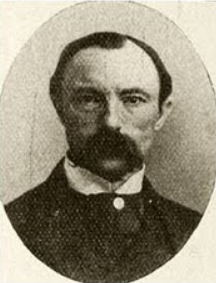Geodia gibberosa, commonly known as the white encrusting sponge, is a species of sea sponge found in the Caribbean. It is eaten by hawksbill turtles. It was first described by Lamarck in 1815.

Geodia is a genus of sea sponge belonging to the family Geodiidae. It is the type genus of its taxonomic family.

Geodiidae is a family of sea sponges.
Geodia exigua is a species of sponge that produces the sesquiterpene spiro compound exiguamide. The species was first described by Johannes Thiele in 1898. It is a marine organism known from Japan.
Geodia alba is a species of sponge in the family Geodiidae. The species is found in the waters of Indonesia and was first described by Oswald Kieschnick in 1896 as Synops alba.
Geodia amadaiba is a species of sponge from the family Geodiidae. The species is found in the waters of Japan and was first described by Tanita & Hoshino in 1989.
Geodia macandrewii is a species of sponge in the family Geodiidae. It is found in the waters of the North Atlantic Ocean. The species was first described by James Scott Bowerbank in 1858.
Geodia atlantica is a species of sponge in the family Geodiidae. It is found in the waters of the North Atlantic Ocean.
Geodia breviana is a species of sponge in the family Geodiidae. It is found in the waters of the Pacific Ocean off the coast of California. It was first described by Robert J. Lendlmayer von Lendenfeld in 1910.
Geodia amphistrongyla is a species of sponge in the family Geodiidae. The species is found in the tropical Pacific Ocean and was first described by Robert J. Lendlmayer von Lendenfeld in 1910.
Geodia apiarium is a species of sea sponge in the family Geodiidae. It is found in the Gulf of Mexico off the coast of Florida.
Geodia arabica is a species of sponge in the family Geodiidae. It is found in the waters of the Arabian Sea and of the Red Sea. The species was first described by Henry John Carter in 1869.
Geodia arripiens is a species of sponge in the family Geodiidae. It is found in the waters of the South China Sea. The species was first described by Nils Gustaf Lindgren in 1897.
Geodia cooksoni is a sponge species in the family Geodiidae. The species was first described by British scientist William Johnson Sollas in 1888 under the name Cydonium cooksoni. It is found in the waters of the Pacific Ocean around the Galápagos Islands.
Geodia nodastrella is a species of sponge in the family Geodiidae. It is found in the waters of the North Atlantic Ocean. The species was first described by Henry John Carter in 1876.
Geodia distincta is a species of sponge in the family Geodiidae. It is found in the waters of the Java Sea. The species was first described by Nils Gustaf Lindgren in 1897.
Geodia ataxastra is a species of sponge in the family Geodiidae. It is found in the waters of the Pacific Ocean near the coasts of Panama and Colombia. The species was first described by Robert J. Lendlmayer von Lendenfeld in 1910.
Geodia auroristella is a species of sponge in the family Geodiidae. It is found in the waters of the Indian Ocean around the Seychelles archipelago. The species was first described by Arthur Dendy in 1916.
Geodia erinacea is a species of sponge in the family Geodiidae. The species was first described by Lendenfeld in 1888. It is found in all the coastal waters of Australia.

Gualtherus Carel Jacob Vosmaer

